This year marks the 50th anniversary of the Moon landing, which forever changed how we think about space and technology. The impact of the Apollo Moon landing program is still being felt by us all, even if we aren’t scientists or weren’t alive to see the landing in 1969.
Sending humans to the Moon for the first time required a lot of new technology, some of which was invented specifically for this event by NASA and its contractors. Over the years, different companies began to create ‘spinoffs’ based on these inventions and sold them to the general population.
Here are our top 5 NASA spinoffs that people still rely on today.
- Modern athletic footwear is as durable and lightweight as it is thanks to NASA engineer Alexander Gross’ work with footwear company Avia to create the Avia Compression Chamber midsole.[1] Gross helped design the Moon landing space suits and used this experience to create the midsole, which is still found in footwear today.
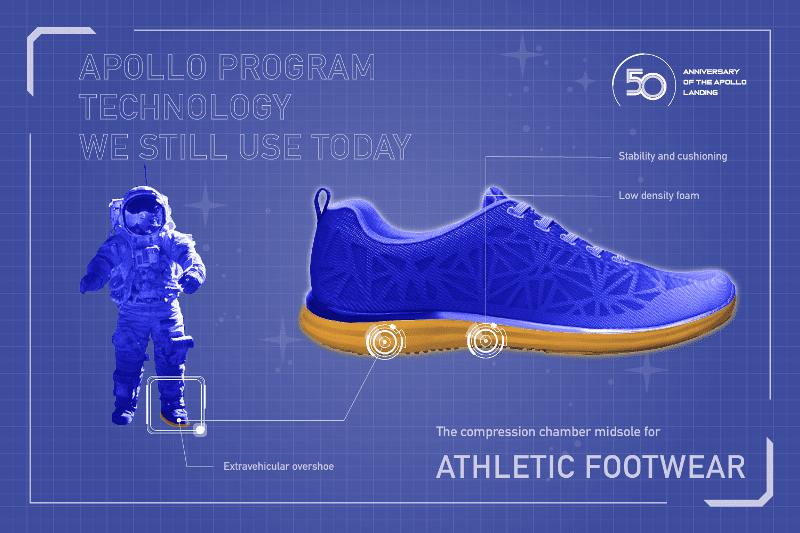
- Compact, lightweight and long-lasting, the Dustbuster was created by Black & Decker Corporation after they were contracted by NASA to design a lunar surface drill.[2] The drill needed a self-powered yet long-lasting motor, and needed to be small and light enough to take to the Moon. Black & Decker later based the design of the Dustbuster on the drill motor they designed for NASA.
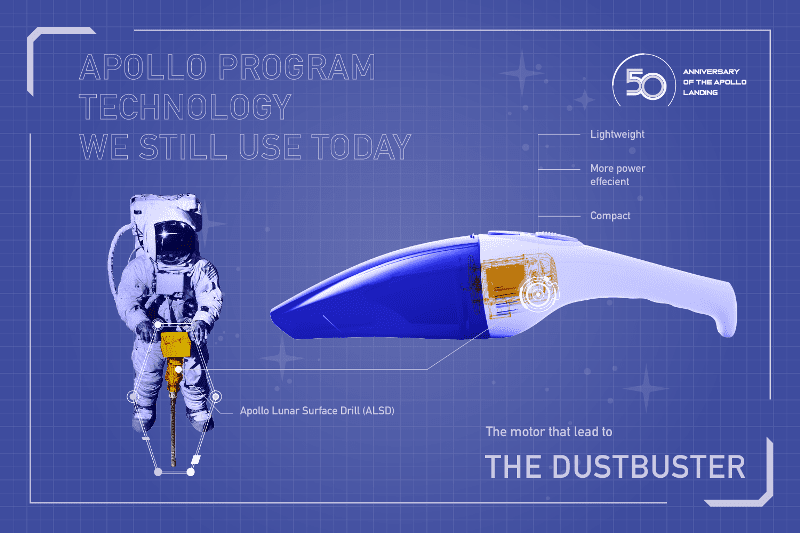
- Space blankets, made from an alfoil-like material, come from the Apollo lunar landing vehicles almost literally.[3] The shiny material is excellent for controlling temperature and was used to help protect astronauts from the extreme temperatures of space. It’s now used to help control the body temperature of emergency patients, hikers, runners and campers.
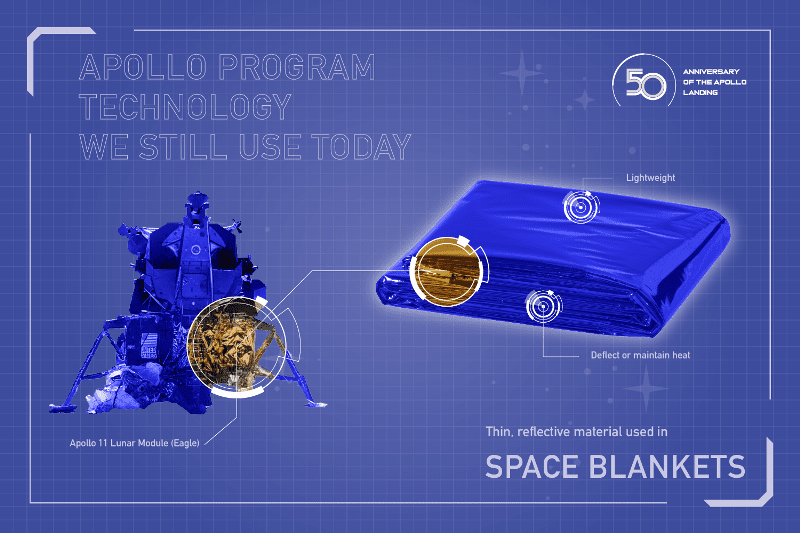
- Firefighters’ uniforms are just one thing that benefits from the fire-proof material created by NASA and Celanese Corporations to protect astronauts from potential fire dangers.[4] The material (called Polybenzimidazole) is not only fire-proof but is also resistant to heat, chemicals and melting. This fire-proof material is also used in motorsports and the production of flat-panel TVs.
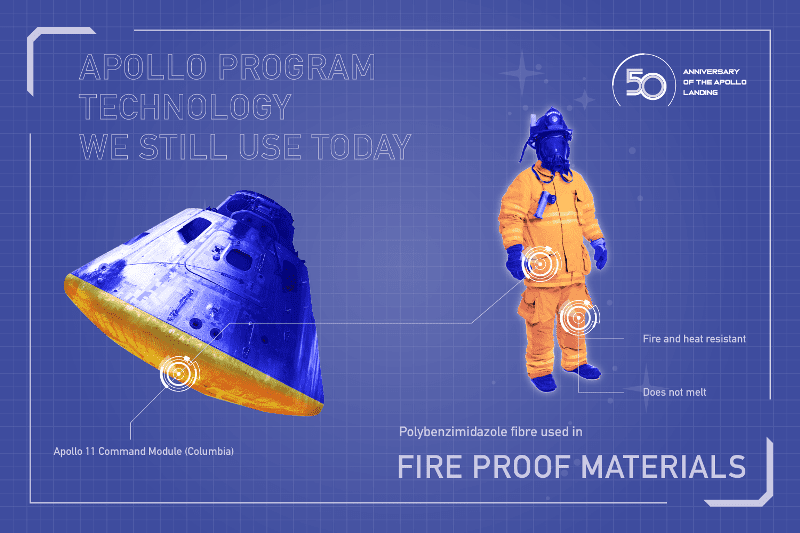
- Seismic shock absorbers are used in buildings and other structures around the world to absorb the energy released by earthquakes and thus minimise damage.[5] Taylor Devices created these shock absorbers after working with NASA on similar equipment for rocket launch towers during the Apollo program and realised their invention could also be used to stabilise buildings during earthquakes.
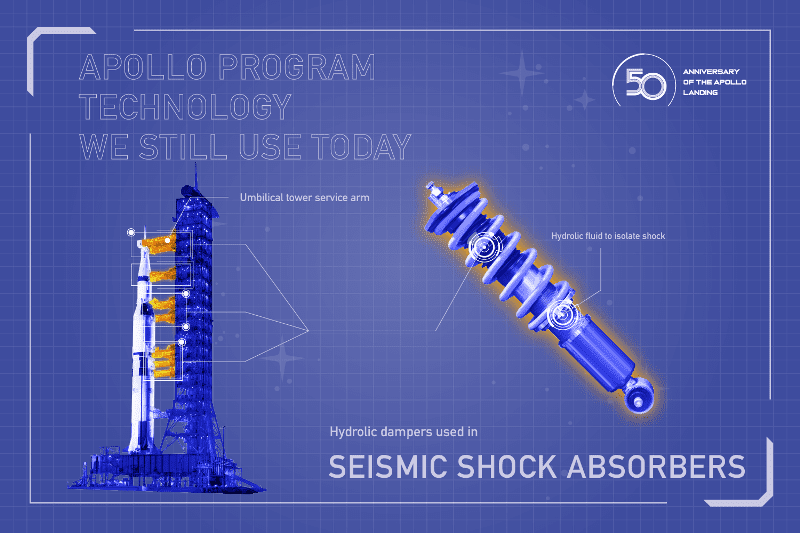
Funnily enough, there are also a lot of things that people think were invented by NASA but actually weren’t.
These include Velcro (developed by the Swiss in the 1940s), Tang (created by General Foods in 1957), Teflon (invented by DuPont in 1938)[6] and the Fisher Space Pen (designed by Fisher Pen Co. independently of NASA).[7]
Sources
[1] ‘Spinoff From a Moon Suit’. Originally published in NASA Spinoff, 1991. Sourced from NASA Spinoff Database in June 2019. [2] ‘Spinoff from a Moon Tool’. Originally published in NASA Spinoff, 1981. Sourced from NASA Spinoff Database in May 2019. [3] ‘Reflecting on Space Benefits: A Shining Example’. Originally published in NASA Spinoff, 2006. Sourced from NASA Spinoff Database in June 2019. [4] ‘Polymer Fabric Protects Firefighters, Military, and Civilians’. Originally published in NASA Spinoff, 2008. Sourced from NASA Spinoff Database in June 2019. [5] ‘Shock Absorbers Save Structures and Lives during Earthquakes’. Originally published in NASA Spinoff, 2015. Sourced from NASA Spinoff Database in June 2019. [6] NASA Spinoff – Frequently Asked Questions. Sourced June 2019. [7] NASA – The Fisher Space Pen. Published on history.nasa.gov. Last updated August 2004. Sourced June 2019.
